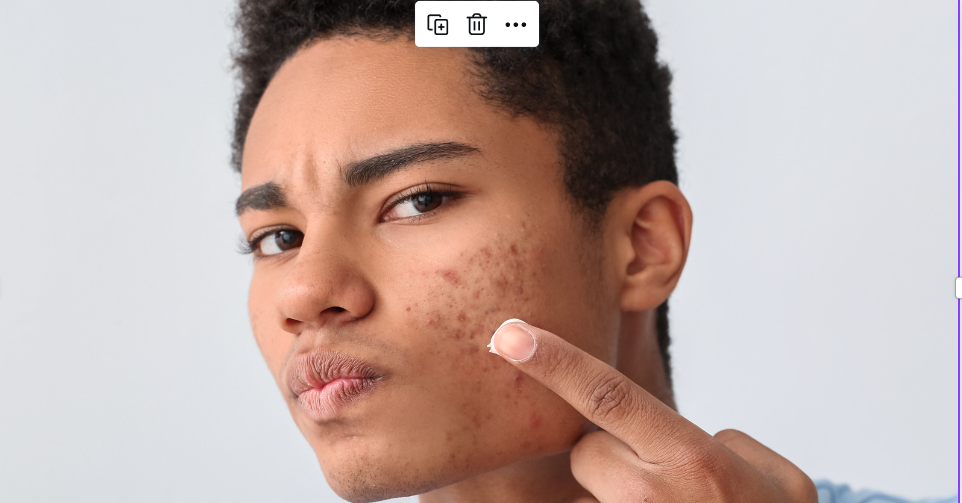LED light therapy, also known as phototherapy, has emerged as a popular treatment for various skin concerns, including acne. It utilizes specific wavelengths of visible light to target and improve skin conditions. In the realm of acne treatment, LED therapy offers a non-invasive and potentially effective approach to managing breakouts.
Understanding LED Light Therapy for Acne
There are two primary colors of LED light used to combat acne:
-
Blue Light Therapy: This utilizes a wavelength range between 400-460 nanometers. This specific blue light targets and destroys P. acnes, the bacteria that contributes significantly to acne formation. By absorbing the blue light, the bacteria is weakened and killed, leading to a reduction in breakouts.
-
Red Light Therapy: Red light has a longer wavelength (around 630-660 nanometers) compared to blue light. While the exact mechanism isn’t fully understood, red light therapy is believed to:
- Reduce inflammation: This can help lessen the redness and swelling associated with acne pimples.
- Promote healing: Red light may stimulate collagen production, which aids in skin repair and can potentially minimize scarring.
Benefits of LED Light Therapy for Acne
While research on LED therapy for acne is ongoing, several potential benefits have been identified:
- Reduced breakouts: Studies suggest that both blue and red light therapy can effectively decrease the number of acne lesions.
- Anti-inflammatory effects: Red light therapy’s ability to reduce inflammation can improve the overall appearance of acne and potentially prevent scarring.
- Non-invasive and painless: LED light therapy is a topical treatment that doesn’t involve needles or harsh chemicals, making it a gentler option for many.
- Improved healing: Red light’s potential to promote healing may shorten the lifespan of acne blemishes.
- Fewer side effects: Compared to traditional acne treatments like antibiotics or topical retinoids, LED therapy generally has fewer side effects.
Things to Consider with LED Light Therapy
While LED therapy offers promise, it’s essential to be aware of some key factors:
- Individual results may vary: The effectiveness of LED therapy can differ from person to person depending on the severity of acne, skin type, and treatment consistency.
- Limited scar reduction: While red light therapy may promote healing, it likely won’t significantly diminish existing acne scars.
- Combination therapy: LED light therapy is often used alongside other acne treatments like topical medications for optimal results.
- Consultation with a dermatologist: Discussing LED therapy with your dermatologist is crucial to determine if it’s suitable for your specific acne and if it aligns with your overall treatment plan.
Using LED Light Therapy Devices
LED light therapy is available in two primary settings:
- In-office treatments: Dermatologists often use professional-grade LED devices that deliver more powerful light for potentially faster results.
- At-home devices: Various LED light therapy devices are available for home use. These devices are generally less powerful than professional ones, but they offer a convenient and potentially cost-effective option for acne management.
Here are some factors to consider when choosing an at-home LED light therapy device:
- Light wavelength: Ensure the device emits blue light in the 400-460 nanometer range for acne treatment. Some devices may offer combinations of blue and red light.
- Light power: While higher-powered devices might be more effective, they tend to be more expensive.
- Treatment time: Sessions typically range from 10 to 30 minutes per use.
- Cost: At-home LED light therapy devices can range from $50 to $300 or more.
Safety and Side Effects
LED light therapy is generally safe for most people. However, some potential side effects include:
- Skin irritation
- Dryness
- Increased sun sensitivity
It’s important to follow the manufacturer’s instructions when using an LED light therapy device and avoid using it if you are pregnant or breastfeeding.
Conclusion
LED light therapy offers a promising approach to acne management. While more research is needed to solidify its long-term effectiveness, it presents a non-invasive and potentially effective option, particularly when used in conjunction with other acne treatments. If you’re considering incorporating LED therapy into your acne routine, consulting with a dermatologist is crucial to determine if it’s the right fit for your individual needs.
Image: Canva Pro

